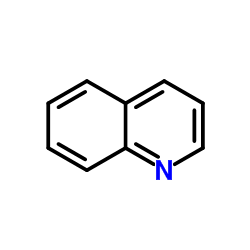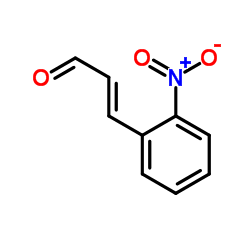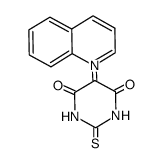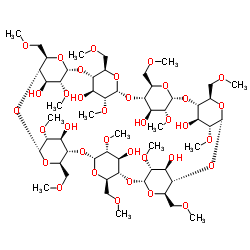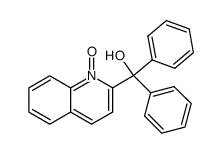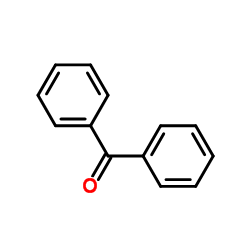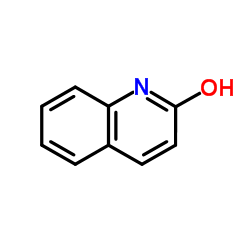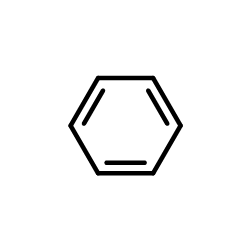1613-37-2
| Name | Quinoline-N-oxide hydrate |
|---|---|
| Synonyms |
glyphosate-potassium
1-oxidoquinolin-1-ium EINECS 216-560-6 Quinoline 1-oxide MFCD00006737 Quinoline N-Oxide Hydrate Glycine, N-(phosphonomethyl)-, potassium salt (1:1) Potassium [(phosphonomethyl)amino]acetate |
| Density | 1.13g/cm3 |
|---|---|
| Boiling Point | 173 °C / 4mmHg |
| Melting Point | 48-53 °C |
| Molecular Formula | C3H7KNO5P |
| Molecular Weight | 207.163 |
| Flash Point | 135.2ºC |
| Exact Mass | 206.969894 |
| PSA | 25.46000 |
| LogP | 2.26830 |
| Vapour Pressure | 0.00206mmHg at 25°C |
| Index of Refraction | 1.597 |
Synonym: Section 2 - COMPOSITION, INFORMATION ON INGREDIENTS
Risk Phrases: None Listed. Section 3 - HAZARDS IDENTIFICATION EMERGENCY OVERVIEW
The toxicological properties of this material have not been fully investigated.Hygroscopic (absorbs moisture from the air). Potential Health Effects Eye: May cause eye irritation. Skin: May cause skin irritation. Ingestion: No information found. Inhalation: May cause respiratory tract irritation. Chronic: Not available. Section 4 - FIRST AID MEASURES Eyes: Flush eyes with plenty of water for at least 15 minutes, occasionally lifting the upper and lower eyelids. Get medical aid. Skin: Flush skin with plenty of water for at least 15 minutes while removing contaminated clothing and shoes. Get medical aid if irritation develops or persists. Ingestion: Get medical aid. Wash mouth out with water. Inhalation: Remove from exposure and move to fresh air immediately. Get medical aid if cough or other symptoms appear. Notes to Physician: Section 5 - FIRE FIGHTING MEASURES General Information: As in any fire, wear a self-contained breathing apparatus in pressure-demand, MSHA/NIOSH (approved or equivalent), and full protective gear. Extinguishing Media: Use water spray, dry chemical, carbon dioxide, or chemical foam. Section 6 - ACCIDENTAL RELEASE MEASURES General Information: Use proper personal protective equipment as indicated in Section 8. Spills/Leaks: Vacuum or sweep up material and place into a suitable disposal container. Section 7 - HANDLING and STORAGE Handling: Avoid breathing dust, vapor, mist, or gas. Avoid contact with skin and eyes. Storage: Store in a cool, dry place. Store in a tightly closed container. Section 8 - EXPOSURE CONTROLS, PERSONAL PROTECTION Engineering Controls: Facilities storing or utilizing this material should be equipped with an eyewash facility and a safety shower. Exposure Limits CAS# 1613-37-2: Personal Protective Equipment Eyes: Wear chemical splash goggles. Skin: Wear appropriate protective gloves to prevent skin exposure. Clothing: Wear a chemical apron. Respirators: A NIOSH/MSHA approved air purifying dust or mist respirator or European Standard EN 149. Section 9 - PHYSICAL AND CHEMICAL PROPERTIES Physical State: Solid Color: Not available. Odor: Not available. pH: Not available. Vapor Pressure: Not available. Viscosity: Not available. Boiling Point: Not available. Freezing/Melting Point: 52 - 55 deg C Autoignition Temperature: Not available. Flash Point: > 112 deg C (> 233.60 deg F) Explosion Limits, lower: Not available. Explosion Limits, upper: Not available. Decomposition Temperature: Solubility in water: Specific Gravity/Density: Molecular Formula: C9H7NO.xH2O Molecular Weight: 145.16 Section 10 - STABILITY AND REACTIVITY Chemical Stability: Not available. Conditions to Avoid: Exposure to moist air or water. Incompatibilities with Other Materials: Strong oxidizing agents - moisture. Hazardous Decomposition Products: Carbon monoxide, oxides of nitrogen, carbon dioxide. Hazardous Polymerization: Has not been reported. Section 11 - TOXICOLOGICAL INFORMATION RTECS#: CAS# 1613-37-2: VC2340000 LD50/LC50: Not available. Carcinogenicity: Quinoline-N-oxide hydrate - Not listed by ACGIH, IARC, or NTP. Other: See actual entry in RTECS for complete information. Section 12 - ECOLOGICAL INFORMATION Section 13 - DISPOSAL CONSIDERATIONS Dispose of in a manner consistent with federal, state, and local regulations. Section 14 - TRANSPORT INFORMATION IATA Not regulated as a hazardous material. IMO Not regulated as a hazardous material. RID/ADR Not regulated as a hazardous material. Section 15 - REGULATORY INFORMATION European/International Regulations European Labeling in Accordance with EC Directives Hazard Symbols: Not available. Risk Phrases: Safety Phrases: S 24/25 Avoid contact with skin and eyes. WGK (Water Danger/Protection) CAS# 1613-37-2: No information available. Canada None of the chemicals in this product are listed on the DSL/NDSL list. CAS# 1613-37-2 is not listed on Canada's Ingredient Disclosure List. US FEDERAL TSCA CAS# 1613-37-2 is not listed on the TSCA inventory. It is for research and development use only. SECTION 16 - ADDITIONAL INFORMATION N/A |
CHEMICAL IDENTIFICATION
HEALTH HAZARD DATAACUTE TOXICITY DATAMUTATION DATA
|
|
~97% 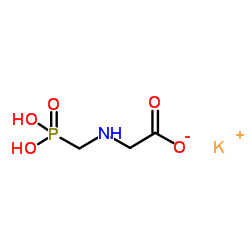
1613-37-2 |
| Literature: Larionov, Oleg V.; Stephens, David; Mfuh, Adelphe M.; Arman, Hadi D.; Naumova, Anastasia S.; Chavez, Gabriel; Skenderi, Behije Organic and Biomolecular Chemistry, 2014 , vol. 12, # 19 p. 3026 - 3036 |
|
~88% 
1613-37-2 |
| Literature: Baik, Woonphil; Kim, Dong Ik; Lee, Hyun Joo; Chung, Wook-Jin; Kim, Byeong Hyo; Lee, Seok Woo Tetrahedron Letters, 1997 , vol. 38, # 26 p. 4579 - 4580 |
|
~73% 
1613-37-2 |
| Literature: Yousif, M. M.; Fadda, A. A.; Elmorsy, S. S.; Hassan, H. M. Indian Journal of Chemistry, Section B: Organic Chemistry Including Medicinal Chemistry, 1987 , vol. 26, p. 994 - 997 |
|
~% 
1613-37-2 |
| Literature: Journal of the American Chemical Society, , vol. 66, p. 621,624 Chemische Berichte, , vol. 69, p. 1566 |
|
~% 
1613-37-2 |
| Literature: Chemical & Pharmaceutical Bulletin, , vol. 36, # 10 p. 3753 - 3759 |
|
~99% 
1613-37-2 |
| Literature: Liotta, R.; Hoff, W. S. Journal of Organic Chemistry, 1980 , vol. 45, # 14 p. 2887 - 2890 |
|
~% 
1613-37-2 |
| Literature: Chemistry of Heterocyclic Compounds (New York, NY, United States), , p. 203 - 206 Khimiya Geterotsiklicheskikh Soedinenii, , vol. 19, # 2 p. 249 - 251 |
|
~% 
1613-37-2 |
| Literature: Pharmazie, , vol. 38, # 12 p. 891 - 891 |
|
~% 
1613-37-2 |
| Literature: Chemische Berichte, , vol. 59, p. 1850 Chemische Berichte, , vol. 66, p. 986 Anm. 7 |
| HS Code | 2933499090 |
|---|---|
| Summary | 2933499090. other compounds containing in the structure a quinoline or isoquinoline ring-system (whether or not hydrogenated), not further fused. VAT:17.0%. Tax rebate rate:13.0%. . MFN tariff:6.5%. General tariff:20.0% |
